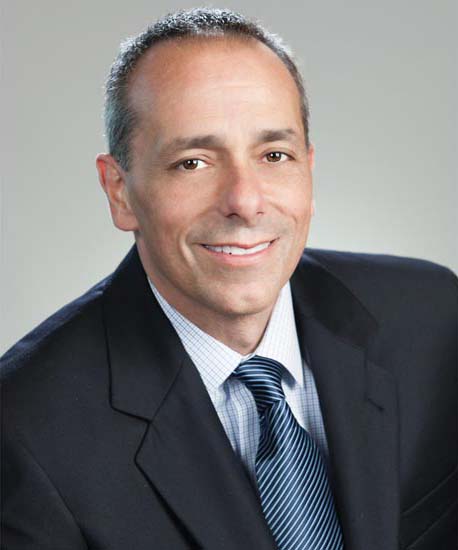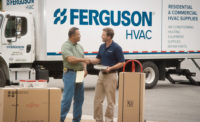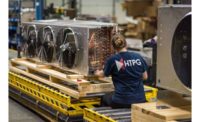Early last year, there was widespread concern that the pandemic-related lockdowns would decimate sales of new HVAC equipment. And while there was an initial drop, sales of HVAC equipment rebounded rather nicely in the second half of the year. In fact, according to Air-Conditioning, Heating, and Refrigeration Institute (AHRI), the 2020 year-to-date combined U.S. shipments of central air conditioners and air-source heat pumps increased 10.1% over 2019, and shipments of gas warm air furnaces decreased only 2.6% for the same time period.
“If I had offered a prediction last March for how 2020 shipments would turn out, I would have been wrong,” said Francis Dietz, vice president of public affairs at AHRI. “A review of AHRI’s statistics for residential air conditioners, heat pumps, electric and gas water heaters, and gas and oil furnaces shows a sustained and nearly across-the-board increase in shipments.”
As for the year ahead, Dietz won’t speculate as to how sales of HVAC equipment may fare, but most manufacturers believe that 2021 is shaping up to be a good year.
Strong Sales
Sales in the second half of 2020 were, indeed, a pleasant surprise, said Philip Windham, president of Nortek Global HVAC LLC.

SURPRISE COMEBACK: Philip Windham said that sales in the second half of 2020 were a pleasant surprise and that the rebound was great for the industry as a whole and for Nortek as a company. (Courtesy of Nortek)
“The boomerang rebound was a great shot in the arm for the industry as a whole and for Nortek as a company,” he said. “We had record months in the back half of 2020, and there are multiple indications from our customers and their customers that this positive trajectory will remain in place through the bulk of the year. Continued work from home, strong replacement cycles, and favorable weather have several in our industry anticipating a solid year.”
The pandemic has also resulted in consumers having more disposable income, as fewer people feel comfortable taking a vacation or dining out in restaurants. This means there is more cash available to purchase new equipment, as well as other accessories such as IAQ products, smart or connected devices, and home filtration, said Windham. He believes service and repair should continue to be strong for contractors as well.
“While equipment sales have been spiking, we are not witnessing a drop off in parts sales,” he said. “Many of the unplanned emergencies related to residential HVAC are converting into full system upgrades for older equipment, while key component replacement remains stable. Of course, the pandemic is the wild card. If more restrictions get enacted, stimulus dries up, unemployment rises, and consumer confidence continues to dip, then all bets are off. But, as of right now, that doesn’t seem to be the case.”

BIG CHALLENGE: One of the biggest challenges encountered on the residential side was contractors’ inability to go into homes due to social distancing restrictions, which greatly reduced their ability to sell product in the usual way. (Courtesy of Mitsubishi Electric Trane HVAC US)
Despite the challenges of last year, Mitsubishi Electric Trane HVAC US (METUS) is very close to reaching its original sales projections for 2020, with high expectations for an equally strong 2021, said Michelle Robb, senior director of marketing at METUS.
“Our residential sector is prepared to experience the highest growth this year,” she said. “Thanks to historically low interest rates, we’ve observed a consistent rise in new home sales and remodeling projects requiring updated HVAC systems. Additionally, as customers continue working from home, we anticipate an increased demand for residential units designed to improve comfort, indoor environmental quality (IEQ), and energy consumption.”

STRONG DEMAND: According to Joe Oliveri, there is a strong demand for residential HVAC products this year, in both equipment and IAQ products. (Courtesy of Johnson Controls)
As with most other OEMs, the first half of 2020 — when the impacts of the pandemic were still becoming known — did not meet expectations for Johnson Controls’ residential business. However, the second half of the year 2020 saw significant growth, said Joe Oliveri, vice president and general manager of global ducted systems at Johnson Controls.
“Looking forward to 2021, we see strong demand for residential HVAC products, in both equipment and IAQ products,” he said. “Changes in the building industry will continue to drive new home construction as people look to move away from major urban cities into smaller suburban cities. State population changes are also fueling housing demand and renovation as the work-from-home movement continues.”
On the commercial side of the business, Johnson Controls launched several new rooftop unit platforms in 2020, and while some had slower than expected sales, Oliveri noted that the results recovered as the year progressed and ultimately met expectations for the year. The company anticipates similarly strong results in the second half of 2021.
While commercial demand certainly dropped in 2020 as sectors such as theaters and restaurants faced major challenges, residential demand picked up significantly during the second part of the year, said Nathan Walker, senior vice president at Goodman Manufacturing Company L.P.
“Last year, the summer season certainly started slowly as many geographies entered lockdowns, and homeowners and business owners did not know what to expect,” he said. “However, for residential products, things turned quickly as work from home became the new normal and people invested in their homes. I expect residential demand to see stable growth in 2021, as home offices and video conferencing are unlikely to go away soon. How and where we work will continue to drive demand purchasing decisions.”
Boiler and water heater manufacturer Noritz was also pleased to see continued growth in 2020, which was even slightly over their projections, said the company’s marketing manager, Andrew Tran.
“We noticed a great growth in residential, while some commercial and institutional sectors were shrinking,” he said. “I think this year, we’ll be able to see a reemergence of the commercial, industrial, and institutional sides as we begin to rebuild the parts of the economy that were impacted the most by the pandemic. We plan to see continued opportunities with new projects and retrofits that we hope will yield stronger sales for the year 2021.”
Vice president and general manager of global ducted systems Johnson Controls
Supply Issues
What could slow down the momentum in the HVAC industry this year are continued supply chain issues, which were an issue last year and caused shortages of all kinds of equipment and materials. As Tran noted, production lines across the world were impacted with everything from shutdowns to furloughs to illness to an overall lack of certainty on what was to come.
“This coincided with an influx of demand from homeowners who suddenly had time to start home improvement projects,” he said. “I predict that there will be some ramp up and recovery, and we will slowly see some of those shortages work themselves out.”
Robb notes that when the country initially shut down, factories shut down as well, and all manufacturers forecasted a downward trend.
“Even when factories started to reopen, many struggled to get inventory levels back to where they needed to be to quickly and efficiently address pent-up demand,” she said. “We anticipate that these challenges will begin to level themselves out as restrictions continue to lessen.”
But problems could remain as supply chain partners continue to struggle with COVID-related issues, said Oliveri.
“In some cases, unplanned demand exceeded production capacity — largely driven by people working from home needing more reliable HVAC systems that provided increased comfort and efficiencies,” he said. “And, in other cases, capacity is reduced due to worker shortages caused by COVID. Continuing to work closely with our supply chain partners and conduct demand planning is important to ensure a consistent flow of components.”
Lead times and availability of equipment definitely suffered last year, said Windham, as the economy and the HVAC market tanked in late March through May. As a result, he said that many equipment manufacturers and their respective vendor partners had to turn the faucet off in order to align with the lack of demand coming through the pipelines.
“Then, as abruptly as our market came to a screeching halt, all heck broke loose,” he said. “Everyone wanted whatever they could get their hands on. Distributor inventories were dried up, manufacturer finished goods and raw inventories were light, and the vendors that supply them and their suppliers behind that all had the same issues. It takes a while for all of those companies and all those materials to get the usual harmonies back in tune. As everyone throughout the channel syncs up, lead times and availability will not be a worry.”
Legislation/Regulation
As far as legislation is concerned, the election of President Biden means that manufacturers can expect more focus on environmental issues, such as the phasing down of HFCs. To that end, the new administration has already initiated the process to submit the Kigali Amendment to the Senate for ratification, and should that pass, AHRI will be very involved with its industry partners to ensure sufficient support to accomplish that goal, said Dietz.
“We have said from the beginning that we prefer a national phasedown structure modeled after that contained in the Kigali Amendment to the Montreal Protocol rather than a patchwork of state regulations,” he said. “We are thrilled to have achieved passage of a bill in Congress [the AIM Act] that gives the EPA the authority to regulate HFCs on a schedule similar to that in the Kigali Amendment. While that bill does not prevent states from enacting statutes that differ from the federal one, we are hopeful that, as in the past, states will pivot from regulating to helping implement the federal statute.”
With passage of the AIM Act, all eyes are now focused on the EPA and their promulgation of user sector regulations in accordance with the phasedown, said Windham. And he added that Nortek is looking forward to participating in that process.
“The recent changes theoretically bring certainty to some timing, but the states still have the ability to adopt building codes in advance of that timing,” he said. “Like other transitions, readiness levels and conversions will vary from state to state and manufacturer to manufacturer. But we will all be ready, and we are very clear and confident in our next-generation refrigerant roadmap.”
The HFC phasedown is inevitable, said Robb, who adds that the transition to refrigerants with lower GWP will be good for both the industry and the environment.
“But we’ll need to adapt just as we did during the transition from R-22,” she said. “We’ll need new products, standards, and training programs. Mitsubishi Electric uses lower-GWP refrigerants in markets worldwide, including our latest HVRF systems in Europe, but additional testing and evaluation are required for the U.S. market.”
In addition to keeping an eye on HFC regulations, METUS is also closely monitoring the Biden administration’s clean energy policies.
“Along with possible infrastructure legislation, there will potentially be increases in efficiency upgrades of existing buildings, upgrades to power grids with an emphasis on renewable energy production, cost reductions in clean energy technologies, and more tax credits and rebates for purchases of energy-efficient technologies,” said Robb.
Dealer Concerns/Opportunities
As far as contractors are concerned, they should have a great year ahead, according to most of the OEMs. But there are likely to be some challenges as well.
“Dealers have a fantastic opportunity to grow residential sales,” said Robb. “Homeowners spent nearly one year at home under social distancing restrictions, and they’ve experienced the pros and cons of their current heating and air conditioning systems. Now is a great time to encourage homeowners to upgrade to an energy efficient heat pump system.”
Indeed, as finished goods inventory begins to climb back to normal levels for OEMs and distributors, dealers will be in a much better position to respond to immediate market demands, especially on the replacement side, said Windham.
“Inventories are expected to increase during the first quarter in 2021, in time for cooling season for much of the country,” he said. “This should put dealers in a better place to respond to customers more quickly than they were able to in 2020.”
As for challenges, contractors and dealers will face similar issues as the OEMs; that is, product availability and price fluctuations that will likely include labor, materials, insurance, and logistics, said Oliveri.
“Contractors are also challenged with hiring and maintaining a trained, capable, and experienced workforce to sustain and grow their businesses,” he said. “Understanding their business model for pricing, costs, profits, sustainability, and marketing are all keys for their own company’s future.”
The labor shortage will continue to be an issue and must be addressed collectively by the industry, said Walker. This should involve creating a strong narrative for young workers so they can easily see how successful they can be in HVACR.
“There is tremendous opportunity for contractors in the future, though,” he said. “With connected equipment and more value-added options such as IAQ, contractors can bring more value to a home than ever before. This creates the opportunity for a contractor to have a closer relationship with customers, which will lead to higher customer lifetime value.”
One of the upcoming trends contractors should also pay close attention to is new home construction versus the replacement market, coupled with the available inventory of new and/or existing homes for sale, said Windham.
“Dealers need to pay close attention to where their time and effort is spent in order to take advantage of shifting go-to-market strategies,” he said. “In short, being flexible regarding the type of customers they serve will benefit them in an uncertain economy.”








